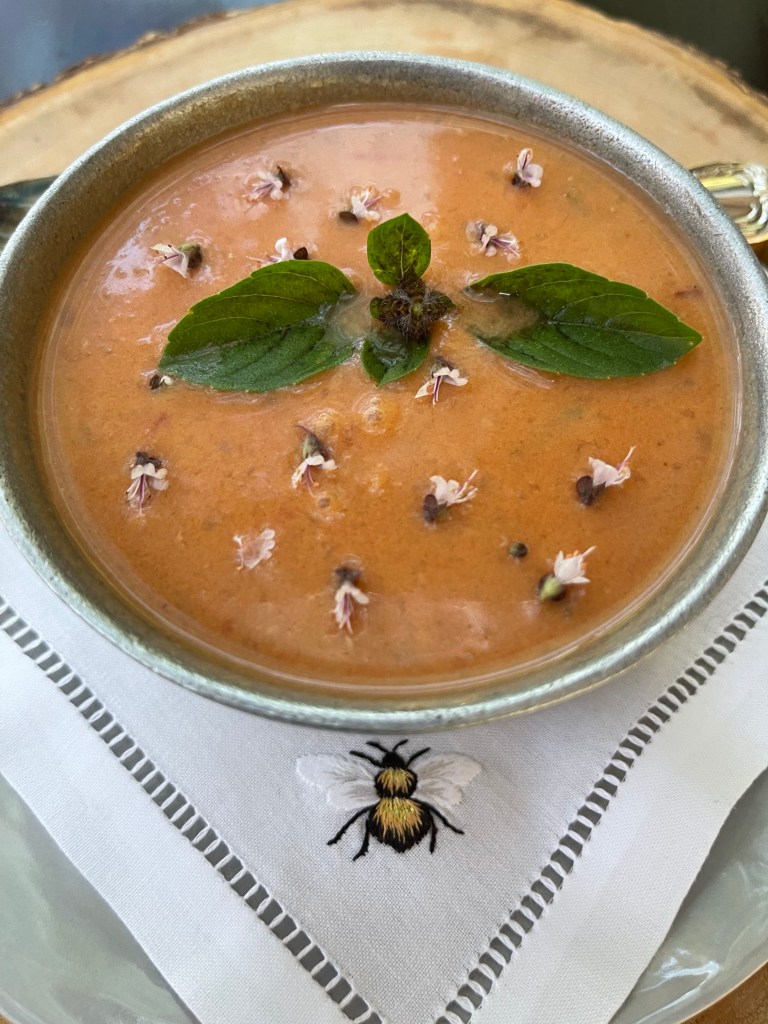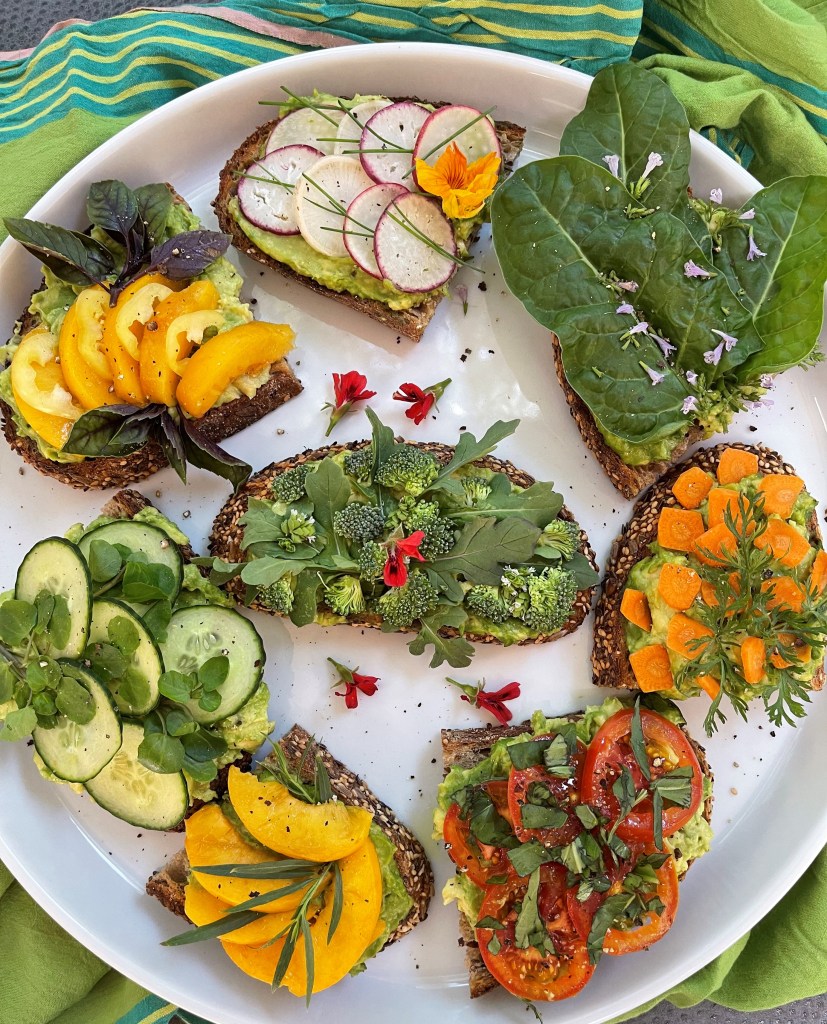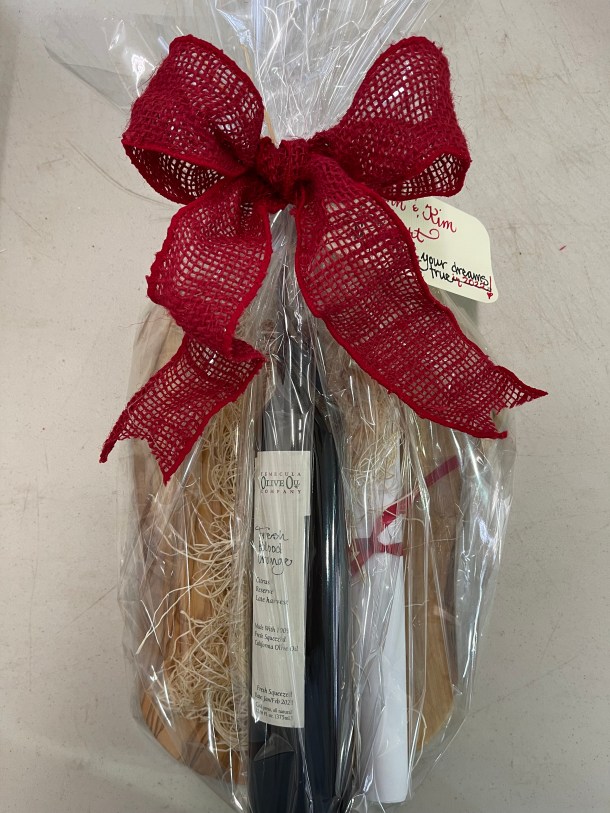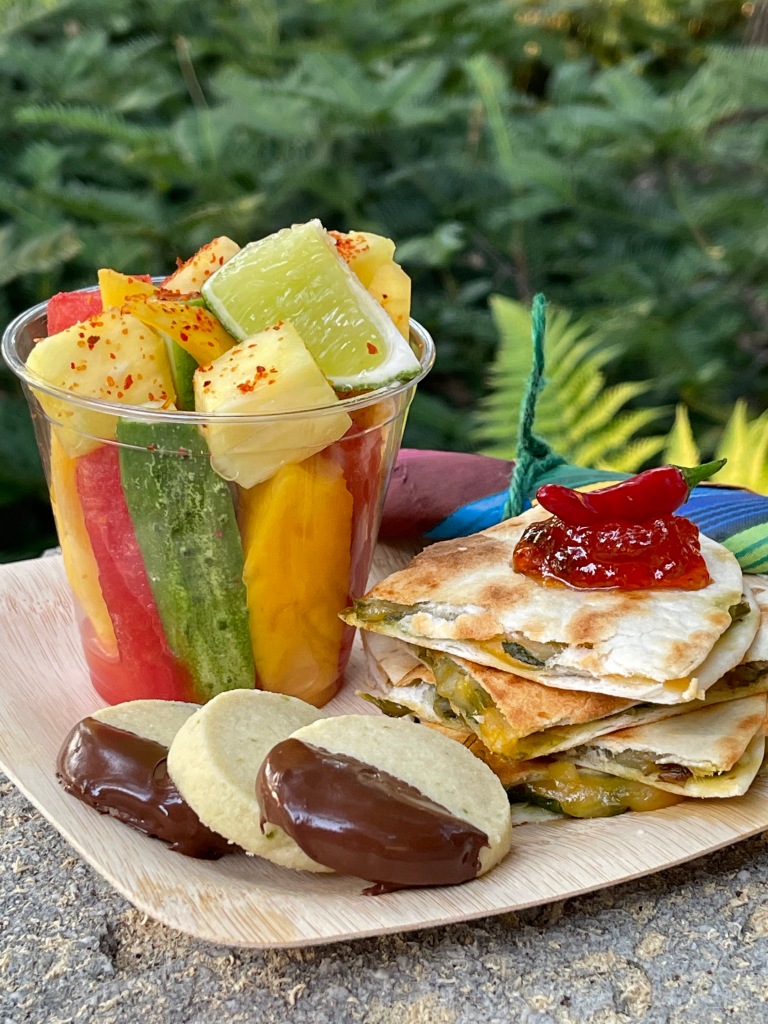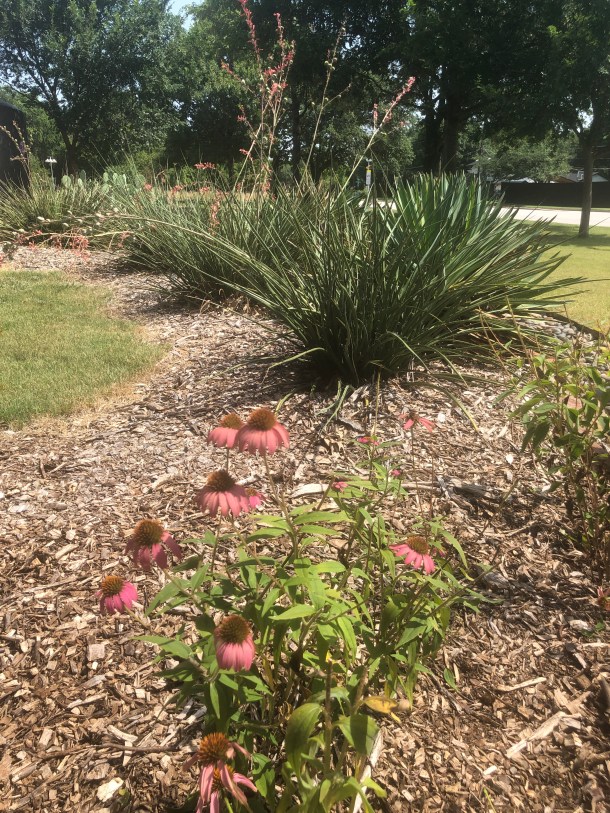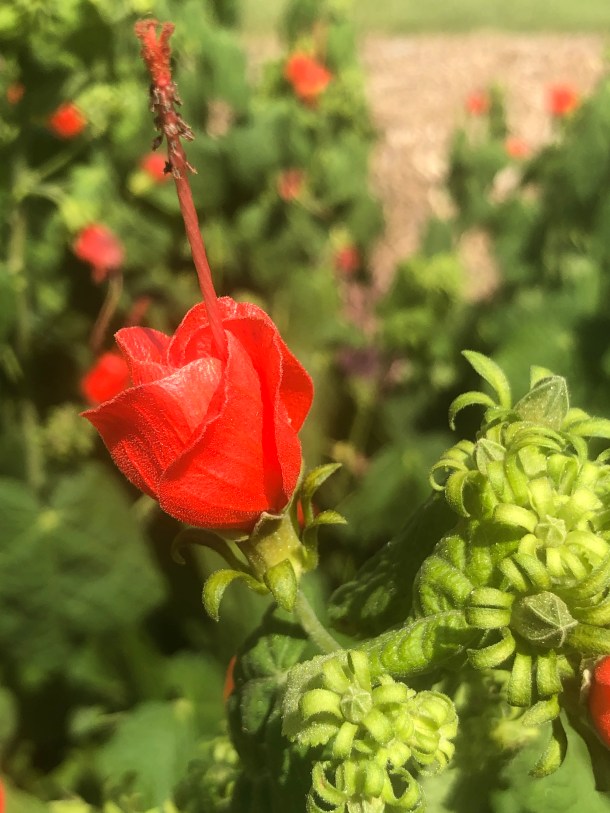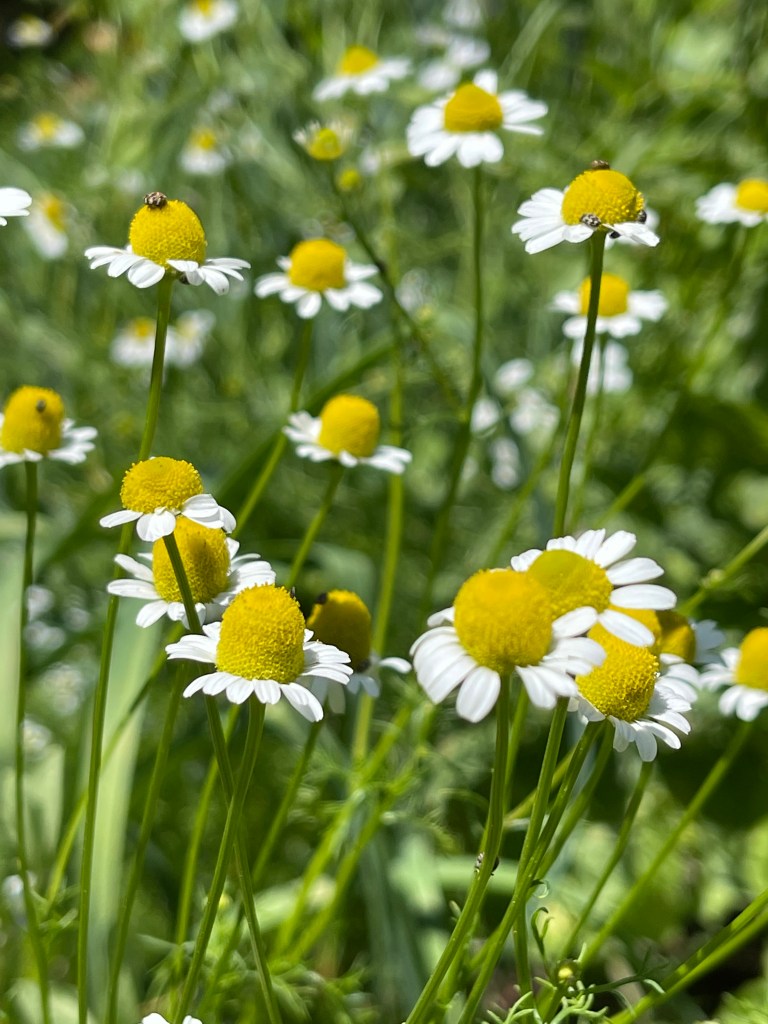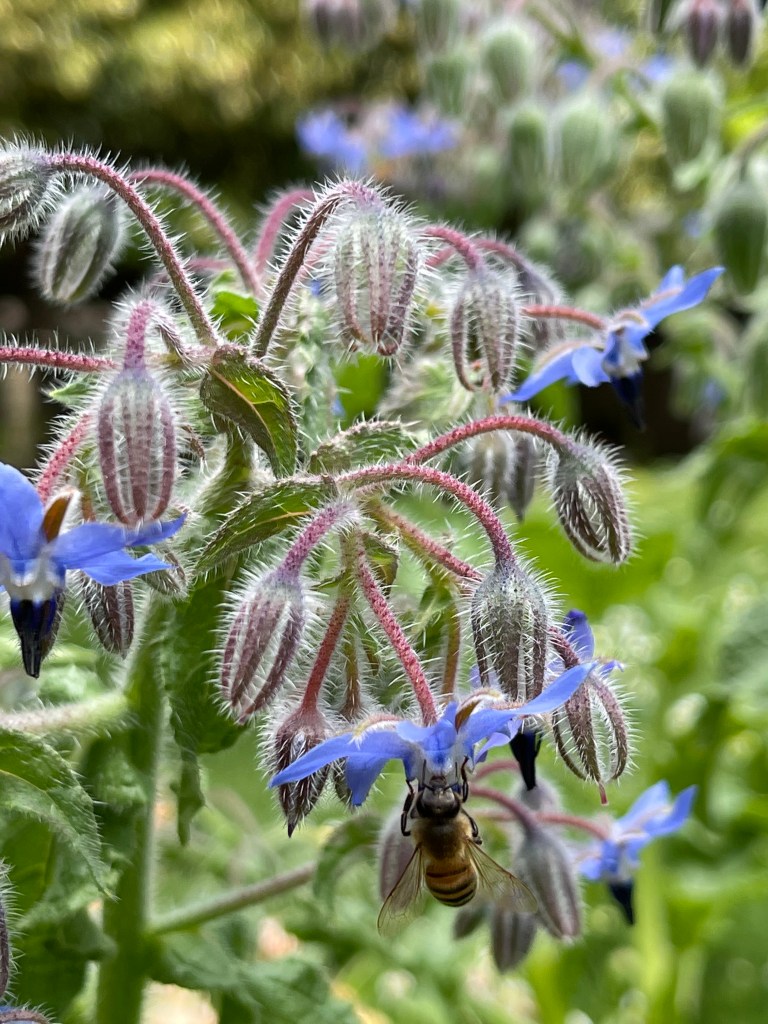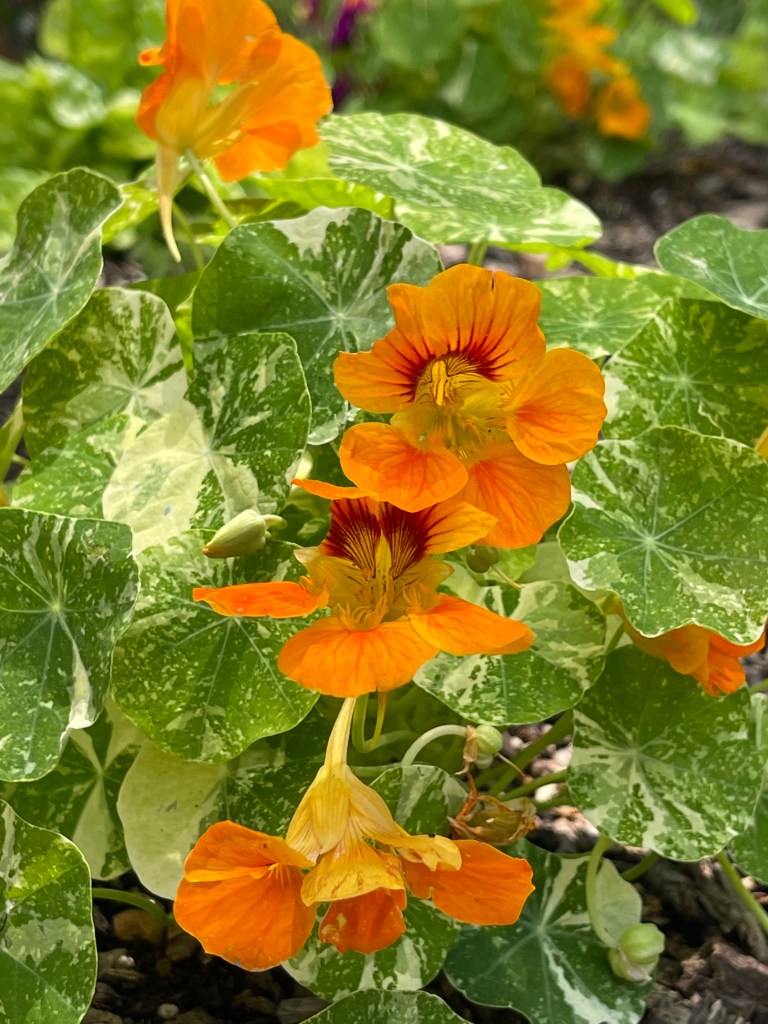August 2, 2021
It was a sizzling hot morning with no breeze other than the gentle air provided by fans turning overhead in the shade pavilion. Our pepper class and tasting event started at 10:00am but even by then, the temperatures were already in the low 90’s. We knew it was going to be a hot one! Thankfully, those who came were seriously interested in learning more about peppers.
Highlights from the Class, Pepper Tasting and Lunch
*Peppers are in the Solanaceae family of nightshade plants as are tomatoes, Irish potatoes and eggplants. There are over 50,000 varieties of peppers. The two broad categories we discussed during the class were sweet peppers and hot peppers.
*Peppers originated in the Mesoamerica territory which includes Central Mexico down across Central America and as far as northern Costa Rica. In the ancient Aztec and Mayan cultures of Mexico chili peppers were prized for their fiery flavor and spicy kick. These native tribes had fully domesticated chili peppers as far back as 5,000-6,000 BC. The word “chili” can be credited to Nahuatl, the Aztec language from which many modern terms are derived.
*Christopher Columbus was one of the first Europeans to encounter the chile pepper. When eating the fruit he felt the same “burn” or “heat” as from black pepper, so he called it “pepper.” This the reason today that chile peppers are called peppers.
*Is it a fruit or a vegetable? Depends on who you are talking to.
Botanists see it as a fruit. A botanist would use the botanical classification which is based on the plant’s physiological characteristics like the structure, function and organization of the plant. Botanically speaking, a ‘fruit’ is the seed-bearing product that grows from the ovary of a flowering plant. A nutritionist or chef would use the culinary classification system. The culinary explanation says that a ‘vegetable’ usually has a tougher texture, tastes blander and often requires cooking. A general consensus finds that peppers are both a fruit and a vegetable!
*Thick Walled/Thin Walled
Peppers are a flavorful addition to a wide variety of recipes. In general, thin walled peppers work well fresh in salads and sandwiches. They may also be sauteed or grilled. For example, shishito peppers may simply be tossed into a pan with olive oil and sauteed until they blister.
Thick walled peppers are excellent for stir frying, stuffing or roasting. For easy oven roasted bell peppers, cut them into strips and place on a sheet pan with olive oil, salt and pepper. Roast at 450˚F about 25 minutes or until tender.
*Understanding the Scoville Scale
Bell peppers have zero Scoville Heat Units (SHU), jalapenos have around 5,000 and habaneros have in the neighborhood of 300,000. What does that mean? The Scoville Heat scale measures the concentration of capsaicin, the chemical compound that makes peppers hot. Wilbur Scoville, a pharmacist, invented the scale in 1912. Originally it measured the dilution needed to make the heat in an extract of a pepper undetectable to a panel of 5 people. A SHU measure of 300,000 indicates that the extract would have to be diluted 300,000 fold before the capsaicin was undetectable.
Now High Performance Liquid Chromatography (HPLC) gives us a direct measurement of capsaicin that is more accurate than sensory methods and is reported in American Spice Trade Association (ASTA) pungency units. One ASTA pungency unit is equivalent to 15 SHU’s. The Scoville scale remains out of tradition so ASTA pungency units are multiplied by 15 to convert them to SHU’s.
*Recommended AgriLife Varieties
Sweet Peppers: Bell Tower, Big Bertha, California Wonder, Gypsy, Jupiter and Yolo Wonder
Hot Peppers: Hidalgo Serrano, Hungarian Wax, Jalapeno, Long Red Cayenne and TAM Mild Jalapeno
*Hottest Pepper in the World
With a rating of 2,200,000 SHU’s, Carolina Reaper holds the record since 2017 for the world’s hottest pepper. (FYI…We aren’t growing it anywhere in the Raincatcher’s Garden).
*Our Favorite 2021 Selection Growing at Raincatcher’s
2021 Grower’s Choice: Jimmy Nardello
We just adore this curvy little pepper with waxy skin and a sweet flavor. Jimmy Nardellos’ parents immigrated to the United States from Southern Italy in 1887 and brought their beloved pepper seeds with them to their new hometown of Naugatuck, Connecticut. Before his death in 1983 Jimmy donated the seeds to a seed preservation organization. Since then, this delicious chili pepper plant is known as the Jimmy Nardello pepper worldwide.
*Growing Peppers
Pepper plants like warm weather. Plant in heavier, well drained soil. Direct sow seeds or move transplants outside late April to mid-May. Give them at least 6 hours of sunlight each day.
Water plants enough to keep them from wilting. Harvest peppers as they mature as this will make the yield greater. Store in the vegetable crisper of the refrigerator for up to 3 weeks. Do not wash before storing. Peppers can be frozen.
For more information on growing peppers go to: https://agrilifeextension.tamu.edu/library/gardening/peppers/
A Delightful Pepper Themed Lunch Menu
Griddled Quesadillas with Mexican Three Cheese Blend, Baby Spinach and Sauteed Peppers-
We layered the tortillas with Mexican Three Cheese Blend, Baby Spinach and Sautéed Peppers. Neil Bolich cooked them on a griddle over heat onsite. We topped them with a dollop of Jalapeno Pepper Jelly from our Raincatcher’s Jam and Jelly Team and a Hot Chili Pepper.
Mexican Fruit Cups Drizzled with a Squeeze of Fresh Lime and Sprinkled with Tajin
Jalapeno Shortbread Cookies Dipped in Ghirardelli Chocolate
Linda Alexander, Dallas County Master Gardener Class of 2008
Beverly Allen, Dallas County Master Gardener Class of 2018
The Edible Landscape and North Vegetable Garden theme for 2022 is still four months away from being revealed. Here is the August clue. This very important person is known for calling agriculture “the crown of all the other sciences” as it required knowledge in many other sciences like botany and chemistry. Have you guessed it yet? If not, check back in September for yet another insightful clue








